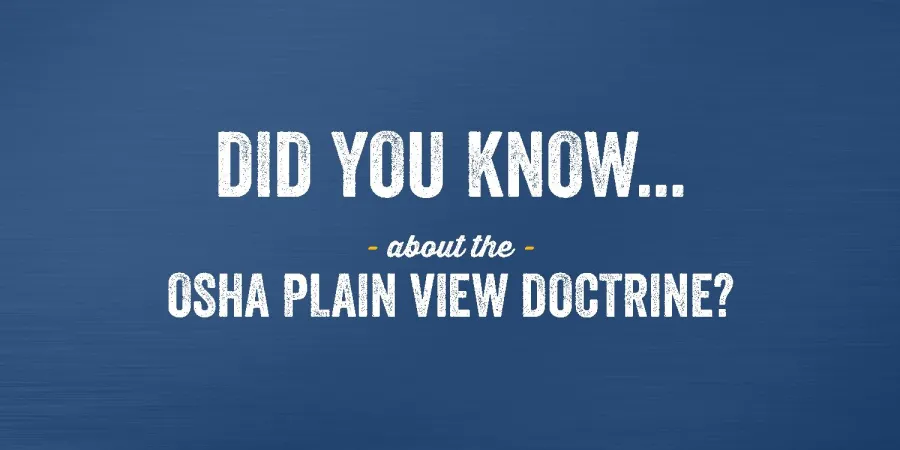OSHA Plain View Doctrine

Tri-State Steel Construction, Inc., v. Occupational Safety and Health Review Commission
Did you know that OSHA inspectors could have limited access when they enter a workplace? Under the Fourth Amendment of the United States Constitution, Occupational Safety and Health (OSHA) inspectors have the right to investigate workplace health and safety violations. However, they could require a warrant. This is where the Plain View Doctrine comes into effect. If a hazard is observed in plain view, OSHA inspectors can issue a citation for that hazard without a warrant.
An example of a legal case involving the Plain View Doctrine is Tri-State Steel Construction, Inc., v. Occupational Safety and Health Review Commission. In 1989, Tri-State Steel Construction, Inc. was a subcontractor on a major construction project which involved the rehabilitation of bridges along a four-mile stretch in Cincinnati, Ohio. To ensure the safety of the construction workers, a traffic control plan, which rerouted traffic around the construction area using barrels, was implemented. The formation of the barrels blocked off the center lanes of the highway, leaving only two lanes on opposite sides of the highway open. The open lanes guided traffic in two separate directions, north and south. Due to this formation, drivers were often in the wrong lane, driving toward the wrong direction with little to no opportunity to switch lanes. Due to the space between the barrels, drivers were able to cut through the construction area to get into the correct lane, subsequently threatening the safety of the construction workers. A complaint was filed with OSHA, outlining the details of the safety hazard. Without a warrant, two OSHA officers were sent to the construction site for an inspection. The OSHA officers did not have a warrant, and therefore company representatives asked them to leave. On the contrary, the OSHA inspectors refused and claimed that the construction area was public property.
During the inspection, two safety hazards, in addition to the traffic hazard, were identified by the OSHA officers. Due to these observations, OSHA obtained a search warrant for the entire project. OSHA conducted a full inspection of the construction project and issued several citations for safety violations. The company argued that the warrantless OSHA inspection, and the inspection that resulted from the warrantless investigation, violated the Fourth Amendment and challenged the citations in an administrative hearing. The judge ruled that neither OSHA inspection violated the Fourth Amendment, given that the construction area was publicly accessible. In other words, the initial OSHA inspection which led to the full inspection only covered areas of the construction site visible to the general public and, therefore, was in plain view.
KNOW YOUR RIGHTS! Workers have the right to report all unsafe and hazardous workplace conditions, not only those in “plain view.” Remember to document unsafe or hazardous conditions that you see or report on the job.